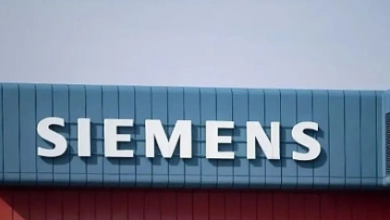
How Boohoo Became a Fast Fashion Powerhouse from Manchester
When people think of Manchester, they often imagine football, music, and its industrial heritage. But over the past decade, the city has also become the unlikely headquarters of one of the world’s most influential fast fashion brands: Boohoo. Founded in 2006, Boohoo has gone from a modest online retailer to a global e-commerce giant, reshaping how young consumers shop for clothes.
As someone who follows the retail industry closely, I find Boohoo’s story both inspiring and cautionary—a tale of innovation in digital marketing, supply chain mastery, and brand-building, but also of controversies surrounding sustainability and labor practices.
From Local Startup to Global Fast Fashion Player
Boohoo began in Manchester with a simple proposition: affordable, trend-driven clothing aimed at Gen Z and millennials. Unlike traditional retailers that relied on seasonal collections, Boohoo embraced a rapid product cycle—introducing thousands of new items every month.
This model gave them agility. While brick-and-mortar stores struggled with overstock, Boohoo could adapt quickly to shifting fashion trends spotted on TikTok or Instagram. By 2014, the company floated on the London Stock Exchange, cementing its reputation as a fast-growing disruptor.
The Digital-First Strategy
One of Boohoo’s greatest strengths has been its digital-first approach. Long before most retailers fully embraced social media, Boohoo invested heavily in influencer marketing. Collaborations with celebrities and reality TV stars helped the brand build a direct connection with its audience.
What impressed me most was their ability to transform Instagram and TikTok into virtual catwalks. Rather than waiting for glossy magazine spreads, Boohoo’s customers could see real people wearing outfits in real time—and purchase with a single click.
This emphasis on digital branding made Boohoo especially resilient during the pandemic, when online shopping boomed. In fact, its sales surged while many traditional fashion retailers shuttered stores.
Expansion Through Acquisitions
Boohoo’s rise was also fueled by aggressive acquisitions. Over the years, it snapped up well-known but struggling UK high street brands such as Karen Millen, Coast, Debenhams, and Oasis. By integrating these labels into its e-commerce ecosystem, Boohoo gained both brand recognition and access to older demographics beyond its Gen Z core.
From my perspective, this strategy demonstrated both vision and pragmatism: vision, because Boohoo saw value in resurrecting legacy brands for the digital age; pragmatism, because it could acquire them at relatively low cost during retail downturns.
The Controversies: Labor and Sustainability
No story about Boohoo is complete without addressing the controversies. In 2020, a media investigation revealed poor working conditions in Leicester garment factories producing for Boohoo. Reports of underpaid workers and unsafe environments sparked backlash, wiping billions off the company’s market value.
Since then, Boohoo has pledged reforms, including independent supply chain audits and sustainability initiatives. However, critics argue that fast fashion’s very business model—cheap clothes, produced quickly and in bulk—is fundamentally at odds with sustainability.
Personally, I believe Boohoo’s long-term success will depend on how it balances affordability with accountability. Young shoppers are increasingly conscious of ethical practices, and brands ignoring this shift may face reputational risks.
Industry Trends: The Future of Fast Fashion
Boohoo’s rise also reflects broader industry trends:
- Ultra-Fast Fashion Competition
Brands like Shein are redefining what “fast” means, launching thousands of new styles weekly. Boohoo must continue innovating to keep pace. - Circular Fashion Movement
Initiatives like resale platforms and recycling programs are gaining traction. Boohoo has started experimenting here, but it remains an uphill battle. - AI and Data-Driven Design
The future of fashion may lie in predictive algorithms that forecast trends before they go viral. Boohoo, with its digital DNA, is well-positioned to leverage such tools.

Personal Perspective: A Visit to Manchester
On a recent visit to Manchester, I was struck by the city’s transformation. Once dominated by textile mills, it is now home to modern offices and creative industries. Seeing Boohoo’s headquarters in this context felt symbolic: Manchester has reinvented itself, and Boohoo embodies that spirit of reinvention.
Yet the echoes of history remain. The same city that fueled the Industrial Revolution with cotton mills is now fueling a new kind of revolution—digital fashion on a global scale. The question is whether this new chapter can avoid repeating the social costs of the past.
Final Thoughts
Boohoo’s journey from Manchester startup to global fast fashion powerhouse is a story of bold vision, digital savvy, and market timing. It shows how a company outside London or Paris can still reshape global fashion trends.
But it’s also a reminder of the double-edged nature of fast fashion. For Boohoo to sustain its success, it must prove it can combine speed and affordability with genuine responsibility. In my view, the brands that thrive in the next decade will be those that not only sell clothes quickly but also do so ethically.
For now, Boohoo remains a fascinating case study—both a symbol of Manchester’s entrepreneurial energy and a test of whether fast fashion can adapt to a more sustainable future.




